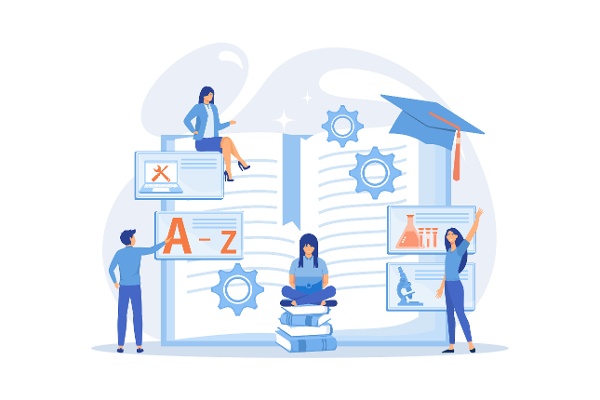
Nowadays, organizations heavily rely on top-notch Customer Relationship Management (CRM) and Enterprise Resource Planning (ERP) platforms to keep all their data organized. Accessing both functionalities using two different platforms is a bit of time taking. Microsoft Dynamics 365 is an integrated set of business applications, merging CRM and ERP, and making it easy for the end users to save more time by avoiding shuffling between applications.
Although D365 contains a significant number of state-of-the-art features, it's a bit tough for the end users to get a hold of it. That's why Dynamic 365 experts recommend organizations arrange different training programs to assist the end users.
Dynamics 365 training offers a good amount of benefits. However, organizations face several challenges while conducting the training. This article will cover everything with respect to Dynamics 365; from benefits, challenges, and best practices to different suitable methods of training.
It is the most significant benefit of end-user Dynamics 365 training. First of all, organizations arrange the training to define the processes that teams need to follow. Moreover, standard operating procedures (SOPs) are defined, and employees are directed to adhere to them. With these SOPs, the workflow is streamlined for the users. Everyone knows their roles and responsibilities, and every single user is aware of processes and workflow.
During the Dynamics 365 training, all the processes are documented and shared with the relevant stakeholders. Once the workflow is streamlined and processed are documented, the organization will rely on the training documentation and the defined process for the existing workers and the new joiners which is an essential factor for the scalability of the organization.
Dynamics 365 training allows the end users to understand the software thoroughly. Once they have an in-depth understanding of Dynamics 365, the number of support tickets will eventually decrease as employees will be able to solve any issues that arise in their daily activities.
The number of support tickets is indirectly proportional to productivity. Dynamics 365 end-user training allows employees to get a solid grip on the platforms. It then results in significant productivity improvement in various ways.
Dynamics 365 end-user training paves the way toward accuracy in every aspect of CRM and ERP. In short, a well-trained employee in specific software such as Dynamics 365 tends to provide more accurate results than an untrained one.
Well-trained employees through end-user training are supposed to deliver results with better workflow execution.
Using a training method for Dynamics 365 that includes a Q&A session diminishes the communication gap which they may face during an online certification or video lectures.

A few renowned organizations have successfully switched to hybrid working settings, and many more are on their way to adopting it sooner. Although remote or hybrid working comes with a lot of benefits, it possesses some significant challenges when it comes to end-user training.
Even though there are plenty of training methods, such as online training sessions, digital courses and certifications, 1:1 coaching, and much more, it’s challenging for organizations to select one that fits in with hybrid working settings.
End-user training takes place to implement the changes that have been made to the current system. The addition of Dynamics 365 sometimes brings a significant change to any organization's current system, and resistance from the employees is inevitable.
It could be their personality type that opposes changes. Moreover, other reasons behind their change resistance could be their previous bad change experiences and the fear of reward deprivation. It’s quite stringent for organizations to eradicate all their reservations and compel them to adopt new technologies with complete sincerity and commitment.
The goal of user training is to make the adoption of Dynamics 365 easy and smooth for the users. However, sometimes, organizations create processes and workflows that are too complex for the users to grasp. Due to complexity, end-users face problems in understanding the new workflow, and it reduces the potency of training. Moreover, end users can't properly apply the new process in the implementation stage because of its complex structure, which again negatively impacts the effectiveness of training.
Not every employee possesses the same level of learning abilities and technical knowledge, and organizations can't implement a one-size-fits-all rule for them. A diverse level of employee expertise is a challenge that upper-level management has to deal with. They have to take the D365 training on a micro level to ensure everyone understands the application to their maximum extent. In a nutshell, there's no room for success until the employees receive the training at their level of understanding.
In order to tackle the rising challenges attached to Dynamics 365 training, you need to apply the following best practices.
The actual training process starts with understanding the end users from every possible aspect. If you’re about to conduct Dynamics 365 training, it’s essential that you perform a thorough analysis of your employees that need training.
This analysis should highlight the following key points:
Their current technical competence.
Their learning capabilities.
How employees are currently performing including the problems present in their workflow.
How the change is going to affect them.
How we are going to train them for the change.
It’s essential to define and develop all the SOPs (Standard Operating Procedures) before conducting the training. The training document should also be created including but not limited to the following:
Problems currently present in the workflow.
How the new workflow is going to resolve those issues?
How better training and new workflow is going to boost the use of D365 for the users?
Also, employees should be aware of what they are supposed to do during the training, what actions should they perform, and what things should they avoid.

Once the SOPs are defined, it’s time to start the end-user training with the most appropriate training method. You may consider choosing any remote, hybrid, or on-premises training method according to your organization’s needs.
The training must include effective change management practices to mitigate the change resistance by the employees. You need to properly convey what positives this change will bring for them. Moreover, the change processes should be easy to understand and adapt for the end users. Because employees will either get stuck or modify the change process due to perplexing processes, and it will disrupt the entire purpose of building capacity.
Key performance indicators (KPIs) are an integral part of any end-user training. They are based on the needs and type of training e.g. if an organization is going to train the end users to adopt D365, they will set the KPIs based on usage of the new workflow and system by the end-users, later in the training program.
KPIs are created before the commencement of training and communicated with the management and then the trainers. After that, trainers will continuously evaluate the results of how the capacity building is going so far.
At the end of the training, an organization will be able to evaluate the performance of users during the training and after the training (during the implementation phase).
VisualSP provides real-time monitoring and reporting features that highlight the percentage of hours saved on training and the exact return on investment (ROI) in the shape of reports, graphs, and charts.
Although training is conducted for a specified period of time, organizations require a proper support platform to help the end-users with their problems and queries, related to the software.
A dedicated support team should be set up if it's not already there. If it's already present (which is normally the case), then train them and update their knowledge base as well so that they can resolve the queries of end users later on.
Support teams and platforms are expensive and sometimes support starts getting too many queries right after the training. To resolve this, the organizations may consider using VisualSP's in-app contextual training mechanism through which the users will get their problems solved quickly without going to the support center.
Thanks to the latest technological advancements, we now have numerous options for conducting end-user training. Here are some of the options we have for Dynamics 365 end-user training.
This training method includes face-to-face interaction, such as seminars and 1:1 dedicated learning. It allows end-users to receive instant help through the Q&A sessions. On-premises training is a good but expensive and less feasible option in modern-day circumstances after the advent of remote working.
In this training method, the trainee doesn’t have to come to a specific location to get the training. Remote training includes online courses, certifications, 1:1 online training, video lectures, etc. This method of training is applicable for remote teams that need capacity building on Dynamics 365 and it works quite effectively since the users can listen to the recorded sessions and D365 material on the go.
It is the most advanced method of training that provides instant help and support within the application through third-party integration. In-app contextual learning can be considered the most suitable training method in the case of Dynamics 365. VisualSP provides state-of-the-art in-app contextual training that shows relevant information about every D365 tool and functionality by clicking or hovering over the element.
Microsoft Dynamics 365 is a good choice for organizations that want to achieve more through a single software. Accessing two key components like CRM and ERP within a single application comes with numerous benefits, but it does induce various challenges.
Organizations that are planning to conduct Dynamics 365 training can take advantage of VisualSP’s comprehensive D365 in-app contextual training. Assisting the end users simultaneously with VisualSP truly benefits the employees and organizations.
13400 S. Route 59
Plainfield, IL 60585, USA
800-764-8061